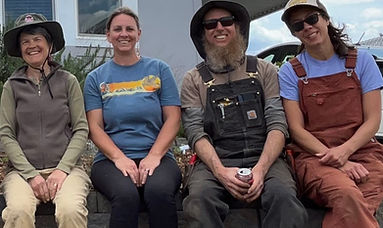From Fire to Flowers
We are helping people plant pollinator gardens, full of native plants, to bring back the pollinators after the Almeda Fire, September 8, 2020.
Read our blog articles about this program, "Restoring Community and Ecology" by Erin Keller:
Read the local and state-wide media coverage this program has received on our In the News! page!
We recognize that many community members displaced by the Almeda Fire of 2020 are not in a financial position to replant their front yard as a pollinator garden in their new home.
Are you, or someone you know, interested in installing a native pollinator garden as you rebuild after the fire? We can help!
Visit our Resources page for information about plants, pollinators, and more!

Kristina Lefever, Vanessa Henson, Ben Ey, and Teresa Fernandez
Restoring the Earth One Native Drought Tolerant Pollinator Garden at a Time
Since 2021:
• 17 gardens installed in Ashland & Phoenix (a few failures)
• 465 plants (trees, shrubs, flowering plants, grasses) • 71 species
• 52 non-duplicative volunteers + gardeners • 26 students (2 Southern Oregon University classes)
We hope this program will inspire the plantings of more pollinator gardens throughout the valley and help rebuild the Rogue Buzzway!
Your contributions help us continue to expand and develop our gardens and educational teachings about native pollinators for our local ecology.


.png)
.png)
.jpg)

.jpg)
_JPG.jpg)
.jpg)



_JPG.jpg)









.jpg)


.png)









